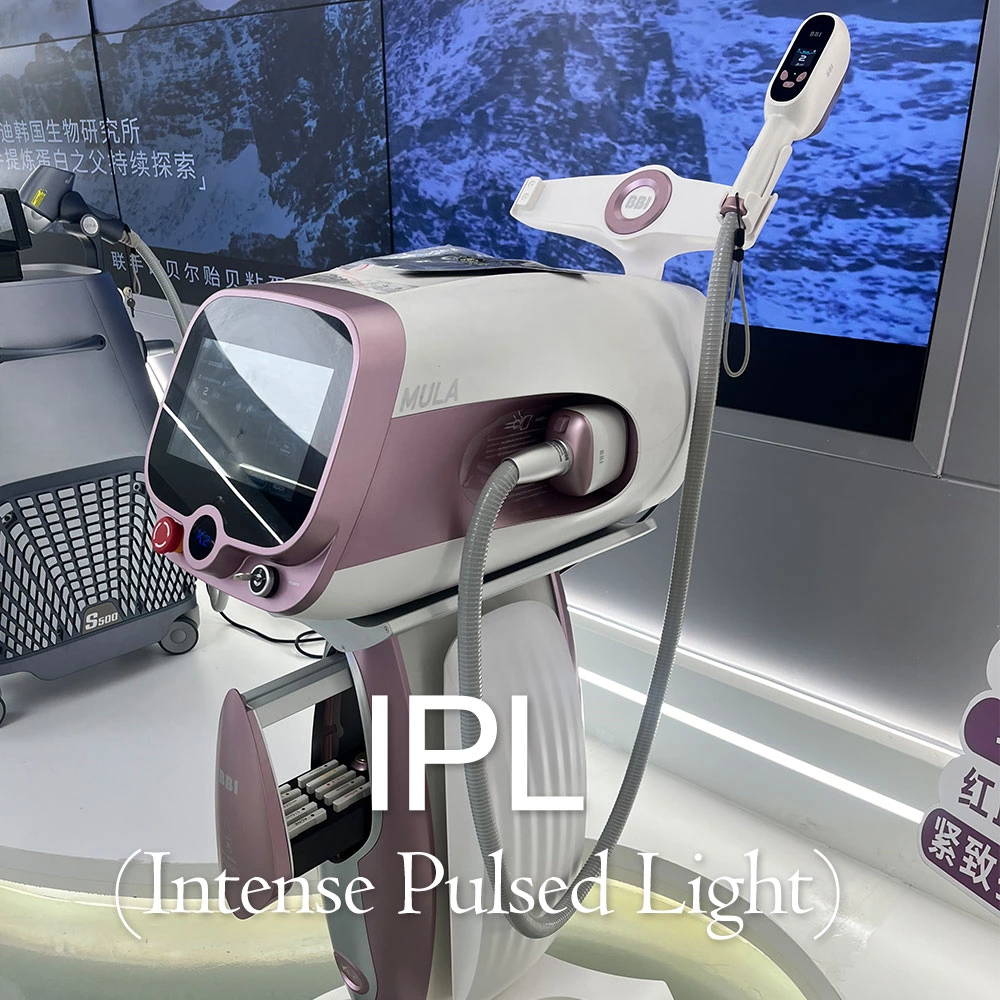IPL

IPL
IPL (Intense Pulsed Light) is a popular cosmetic treatment used to address various skin issues. Although it is similar to laser treatments, IPL uses broad-spectrum light, whereas lasers use a specific wavelength of light. This broader spectrum allows IPL to treat a wider range of skin conditions. Intense Pulsed Light (IPL) devices typically operate within a broad wavelength range of 400 nm to 1200 nm. This range allows IPL to target various chromophores in the skin, such as melanin in hair follicles and pigmented lesions, and hemoglobin in blood vessels. By using filters, specific wavelength ranges can be selected to treat different skin conditions effectively, making IPL a versatile tool in dermatology and cosmetic treatments.
How IPL Works
IPL devices emit multiple wavelengths of light, which are absorbed by the pigment in the skin, blood vessels, and hair follicles. The light energy is converted to heat, which destroys the targeted cells without damaging the surrounding tissue. This process helps to reduce or eliminate the appearance of various skin imperfections.
Common Uses of IPL
- Hair Removal: IPL targets the melanin in hair follicles, effectively reducing hair growth over multiple sessions.
- Photorejuvenation: IPL can treat signs of aging such as sun damage, age spots, and freckles by targeting pigmented cells.
- Acne Treatment: The heat generated by IPL can help to reduce acne by targeting bacteria and shrinking sebaceous glands.
- Vascular Lesions: IPL is effective in treating broken capillaries, spider veins, and rosacea by targeting blood vessels.
- Pigmentation Issues: IPL can reduce the appearance of hyperpigmentation and melasma by targeting melanin in the skin.
- Skin Texture Improvement: IPL can stimulate collagen production, leading to improved skin texture and reduced fine lines.
Benefits of IPL
- Non-invasive: IPL is a non-surgical treatment with minimal downtime.
- Versatile: It can treat multiple skin conditions simultaneously.
- Customizable: Settings can be adjusted to target specific issues and skin types.
- Minimal Side Effects: When performed correctly, IPL has few side effects, primarily mild redness and swelling.
What to Expect During an IPL Treatment
- Preparation: The treatment area is cleaned, and a cooling gel is applied. Protective eyewear is provided.
- Procedure: The IPL device is moved across the skin, delivering pulses of light. Patients may feel a slight stinging sensation similar to a rubber band snapping against the skin.
- Post-treatment: There may be temporary redness and swelling, which typically subside within a few hours to a few days. Sun protection is crucial after treatment to prevent damage to the treated skin.
Considerations and Risks
- Multiple Sessions: Depending on the condition being treated, several sessions may be needed for optimal results.
- Skin Type: IPL is generally more effective on lighter skin tones and may pose a risk of hyperpigmentation or hypopigmentation in darker skin tones.
- Sun Exposure: Avoid sun exposure before and after treatment to reduce the risk of complications.
Conclusion
IPL is a versatile and effective treatment for a variety of skin concerns, offering benefits such as hair removal, skin rejuvenation, and the treatment of vascular and pigmented lesions. Consulting with a qualified dermatologist or cosmetic professional is essential to determine if IPL is suitable for your specific skin type and condition.
Source: IPL




 Ciellulu Laser - Facial Machine Supplier
Ciellulu Laser - Facial Machine Supplier

